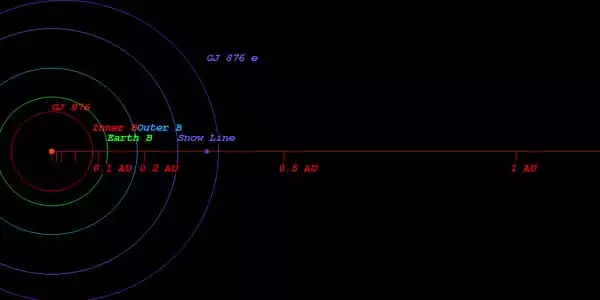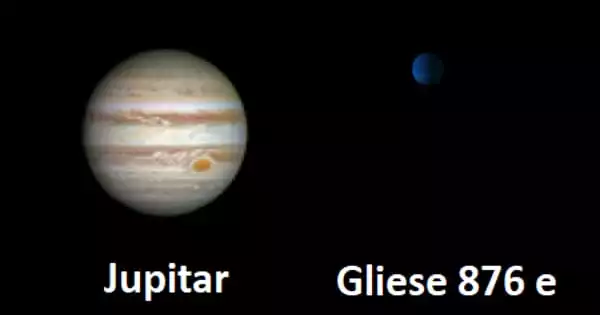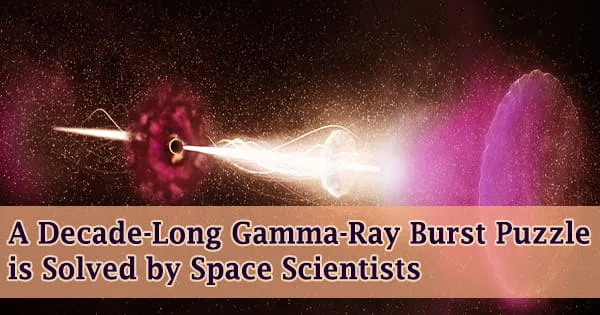Gliese 876 e is an exoplanet that resembles Neptune and orbits an M-type star. It is an exoplanet that orbits the star Gliese 876 in the Aquarius constellation. It has a mass of 14.6 Earths, takes 124.3 days to complete one orbit around its star, and is 0.3343 AU away from it. It has a 1:2:4 Laplace resonance with Gliese 876 c and Gliese 876 b: for each orbit of planet e, planet b completes two orbits and planet c completes four. After Jupiter’s moons Io, Europa, and Ganymede, this configuration is the second known example of a Laplace resonance. It takes 124 days to complete its orbit. It was discovered in 2010 and was announced at the time.
Gliese 876 e is an exoplanet that orbits the star GJ 876, which is approximately 15.3 light-years (4.7 pc) away from our Solar System. Its discovery was made public in 2010. GJ 876 has an apparent magnitude of 10.2 and an absolute magnitude of 11.8. It is 0.3 times more massive and 0.4 times larger than our Sun. The surface temperature is 3350 degrees Fahrenheit, and the spectral type is M4 V. The extrasolar planet GJ 876 e orbits the star GJ 876 every 124.4 days at an orbital distance of 0.34 AU in this planetary system.

Gliese 876 is a red dwarf located about 15 light-years from Earth in the Aquarius constellation. The orbital properties of the planets are also noteworthy in the planetary system. It is the only known system of orbital companions to show a near-triple conjunction in the rare phenomenon of Laplace resonance (first observed in Jupiter’s inner three Galilean moons). It is also the first extrasolar system with measured coplanarity around a normal star.
The mass of Gliese 876 e is comparable to that of Uranus. Its orbit takes 124 days, or roughly one-third of a year to complete. While the orbital period is longer than that of Mercury around the Sun, the planet’s orbit has a slightly smaller semimajor axis due to the host star’s lower mass relative to the Sun. Gliese 876 e, unlike Mercury, has a nearly circular orbit with an eccentricity of 0.055 ± 0.012.
Like b and c, this planet has most likely migrated inward. Gliese 876 is a relatively close neighbor to the Solar System. According to Hipparcos satellite astrometric measurements, the star has a parallax of 213.28 milliarcseconds, corresponding to a distance of 4.69 parsecs (15.3 ly). Despite its proximity to Earth, the star is so dim that it is invisible to the naked eye and can only be seen through a telescope.
















